
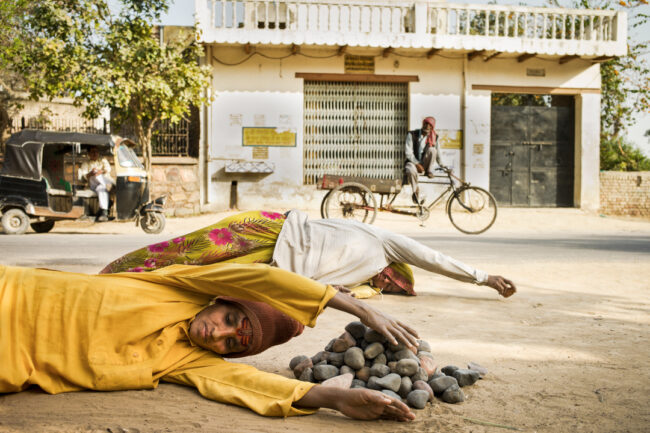

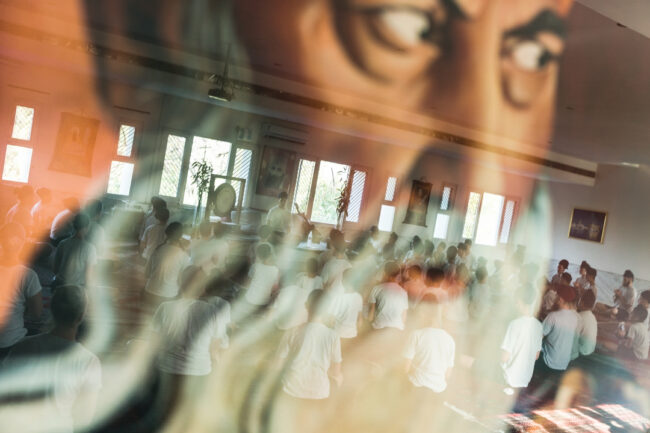


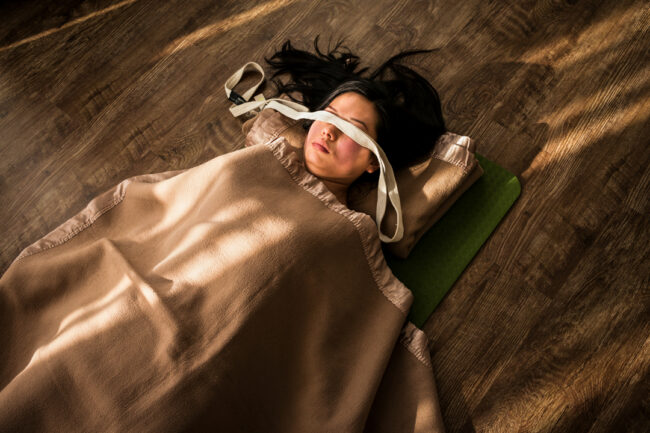
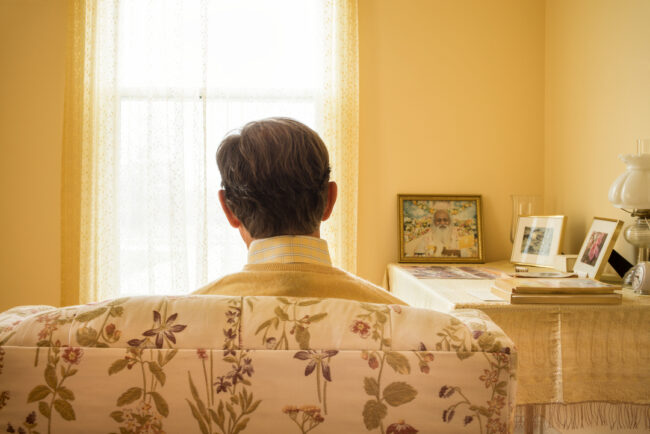
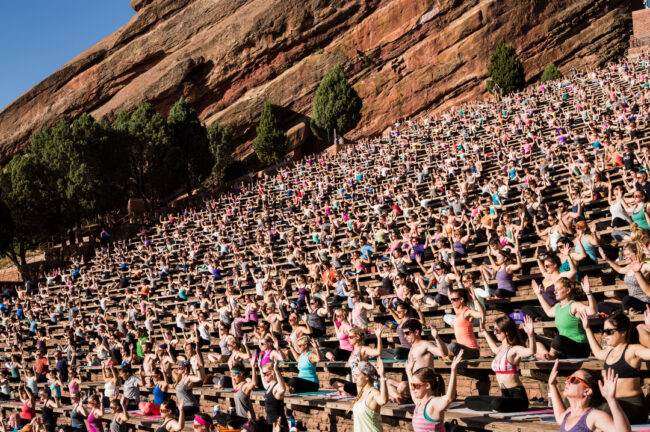
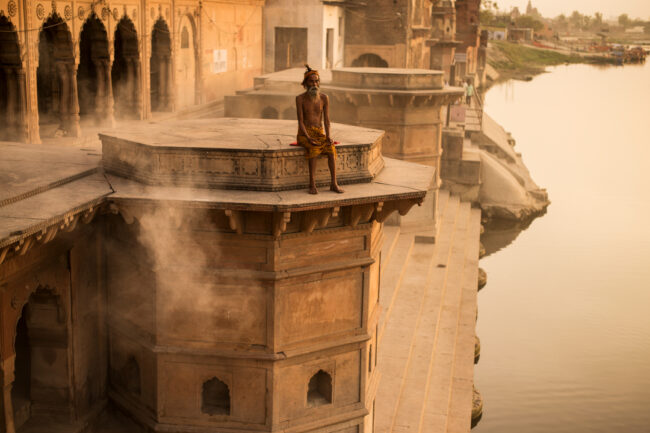

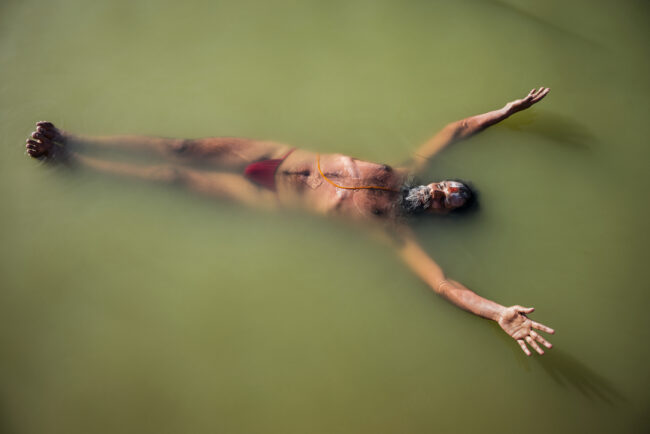
Photographer: Andy Richter
Heidi: How did yoga come into your life?
Andy: Yoga entered my life around 2004 when I was living in Crested Butte, Colorado, where I worked as a professional ski patrolman. I began in the Iyengar tradition, which emphasizes alignment and using the body as an instrument for expanded consciousness and awareness. In it, one is so focused on the specific, subtle movements of the body, that it is hard to be anywhere but present. In a two-hour class, my teacher would walk around the room offering adjustments and share yogic philosophy while we held 4 or 5 postures for extended periods of time, letting go of tension, mental chatter and becoming aware of a more profound reality. It was transformative, and not easy. Yet I kept coming back for more. That was my beginning, an opening to a new way.
When did you decide to document your practice?
After a few years of Iyengar Yoga, I started practicing Vinyasa Yoga in a heated room, primarily because I was living in a city with cold and dark winters, in Minneapolis, where I currently live and work. For me, it is essential to move my body before I can settle down and still my mind, so the vigorous physical nature of Vinyasa seemed a good choice. This led to Kundalini Yoga, which I currently practice. By 2011, I had a solid foundation in yoga and I began thinking about how to explore it through photography, as a way to go deeper.
As much of yoga happens internally, working in a medium that deals primarily with surfaces has proven challenging at times. To make photographs that convey transformation and transcendence, new visual strategies are required. I use abstractions, reflections, pictures within pictures (often to convey lineages and relationships), allegorical photographs, and being receptive to moments that convey presence. Yoga is defined as union, the capacity to merge the finite with the infinite–our individual human experience with the universal consciousness. It is a method of self-realization and a state of being. Yet, how can these vast and often esoteric concepts be pictured, understood, and known?
How long were you in India?
I have been to India 6 times. It was important for me to look at the roots of yoga; it’s history and myriad traditions, which required extensive travel over 5 years, especially in India–yoga’s source. I also made a lot of the work throughout the United States, as well as in Mexico and China, when looking at contemporary forms of yoga.
To answer your question, for this series, I travelled to India 3 times for anywhere from 6 weeks to 2 months at a time. I spent many days in caves in the Himalayas with silent yogis. I lived in ashrams and with various spiritual communities. Many saints and great masters blessed me and shared their teachings with me. For weeks, I lived a tent while photographing massive Hindu fairs with millions of pilgrims and yogis. There was a lot of research and learning prior to each of these trips, yet, once I started working one thing led to another, often in very unexpected and serendipitous ways. Serpent in the Wilderness, my monograph published with Kehrer Verlag (2018), is the result.
What were some of the unexpected discoveries along the way?
Yoga is more than we think it is. It has been enriching to look at it from an experiential perspective, as well as a historical, cultural, spiritual, and a visual one. Photography affords an opportunity to ask questions and see where they lead. For me, it isn’t about definitive answers to the questions as much as it is the experience and process of making the work. I am not suggesting the photographs are not important; they certainly are, yet not more so than life, and deepening my relationship to it.
In the times we’re living in, especially right now, there is so much pressure on us. This is an intense moment on every level—personal, social, political, environmental, among many others. Our attention is so precious. We need to be wise in how use it and where we place it. So we can focus and be present in our lives, at least some of the time. So we can remain whole and maintain some kind of balance. More than ever, it is essential to have techniques to control our inner state. Yoga is one such tool.
What are some of the more unique applications of yoga?
The first sutra of Patanjali talks about yoga being the “cessation of the chatter of the mind”. If that is possible, many things can be understood and experienced. If we practice, that is. We are often in our heads, somewhere in the future making plans, or alternatively, in the past reliving something that is no longer here, all the while we are missing what is happening right before us. Yoga offers us an experience of the present. Perhaps this is the most significant gift it has given me. Yet, I cannot emphasize enough that it is a practice…not something you do and then all is figured out. It requires discipline, and returning to it. Yoga is more of a way of life than something one does on a mat. It is living life with intention and awareness in each moment.
Was it difficult at times to be an observer with a camera, as yoga is often a dedicated practice without observers?
Access was a challenge initially. As I started working, the doors opened slowly, yet once I had photographs to show and people had a sense of my intentions and work, things started to change. About a year in, after a few requests, I received an email from B.K.S. Iyengar’s studio on a cold winter morning in Minneapolis, inviting me to come spend some time working with the late master in Pune, India. This is one of the most influential yogis of all time, mind you, and I was allowed to come photograph over a couple days and interview him. Within a month or so, I was in India photographing his daily practice at the age of 94, a little over a year before he passed away.
I often work with Leicas, which allows me to work in low light with fluency and to be unobtrusive and quiet. As a yogi, I am able to understand the situation before me from both sides and to respond intuitively and in a way that is appropriate in the moment. For me, it is essential to not take the individual, or group, that I am working with out of their experience. They are there, doing their work, going within and I have been given an opportunity. It might be silent meditation, chanting a mantra or doing a pranayam, or doing strenuous asanas (postures). Whatever it is, I want to tap into that and somehow, using this medium, communicate the more subtle aspects of their experience. It is a lot to ask from photography.
There have been many books on yoga, what makes this book unique?
The work in Serpent in the Wilderness (Kehrer Verlag, 2018), my monograph exploring yoga represents my own walk through yoga. It is not intended to be all encompassing, or to represent yoga around the world in all of its forms. It’s my own exploration, my own contemplation, and where I’ve been led through the years. The photography is experiential and personal, and I am very much immersed in the subject matter.
I do not want to get too into what others are doing, but most photography related to yoga has a performative aspect to it, or is portrait-based, where a more directorial approach is taken on the part of the photographer. The subject is often represented in a superficial way, frequently with an emphasis on the physical body and postures, with commercial imperatives. The depths of yoga are rarely acknowledged or looked at, and we stay on the surface. In terms of Serpent in the Wilderness, I wanted to approach it in a very open way and to dig into the essence of what yoga is, both past and present. I employed a more documentary approach in making the work, without being tied to a traditional narrative structure. I created a variety of different types of photographs for the series, in order to point toward some of the more subtle aspects of the discipline. I am not attempting to illustrate what yoga is, but rather trying to peel back it’s many layers both as a photographer, and as a practitioner–to ask questions and understand something new.
When actually photographing, I’m tuned into what’s happening before me and trying to transmit the inner experience that the yogi in front of me is having. At least what the camera will allow for, that is. Certainly, my physical presence in the space (ashram, cave, classroom, etc.) has an affect on the individuals before me, and I think it is important to be honest about this. I am not a fly on the wall, nor is that my intention or objective. But I do work lightly, and in a very sensitive way. I was always clear about my intentions with others and fortunate to be invited into some truly incredible situations and contexts to make this work.
How did the National Geographic story come about?
A day or so after Hurricane Sandy, I met Sarah Leen in Washington D.C. prior to her taking on the role as Director of Photography for National Geographic Magazine, a position she stepped down from last autumn, so she was familiar with my work. A few years later, I worked with Elizabeth Krist, a former senior photo editor, during a weekend workshop hosted by Visura in Stowe, Vermont. She brought the project to the magazine for consideration and perhaps further development, but it didn’t go anywhere at the time. As with most magazines, timing is critical, and the work has to align with the specific interests and needs of the moment.
I continued making my work, as time and resources allowed. When I was ready to publish the book, I showed exhibition prints and a book maquette to Sarah again, the project was much more resolved by then. She gave me some positive feedback on how I had developed things, yet it didn’t really lead anywhere at that time in terms of a story in the magazine. I published my monograph in 2018 with Kehrer Verlag, a German art book publisher, and in 2019 a different photo editor from National Geographic reached out to me and asked if I would be interested in working with them on a story about yoga for a forthcoming issue on Wellness. I was, so the idea of a story was born–looking at yoga through the lens of health and wellbeing.
The magazine wanted to commission some new original photography in addition to using a selection of the work that I made for the book. So we started to discuss where to go and what to do together. I had a number of ideas for locations and contexts that I wanted to photograph, and we began to do research and look into access. Specifically, I was interested in looking at the impact yoga is having in the lives of individuals who are incarcerated. I also hoped to photograph some of the various ways that yoga is helping veterans and active duty service members deal with the challenges of life in the military such as PTSD, TBI, addictions, among others. We eventually found a prison outside of San Diego that was willing to allow us in to photograph, for one class, on one Saturday morning. So, there was a bit of pressure in that hour and a half, to say the least.
As San Diego has a large military presence, when I was there to work in the prison, I also photographed in Navy hospitals, outpatient settings, clinics, and on base to look at that aspect of the story. It was a very fruitful collaboration and I think everyone that worked on the project was pleased with how it all came together. The feature, “Finding Calm”, was written by Fran Smith and published in the January 2020 issue of the magazine and online.